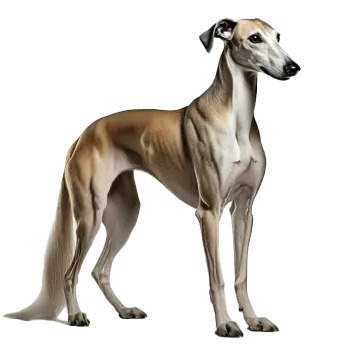The Arabian Hound carries a rich tapestry of names that reflect its ancient heritage and the various cultures that have treasured this remarkable breed throughout history. The most widely recognized official name is Sloughi, derived from the Arabic word that has been used for centuries across North Africa to describe this elegant sighthound. The pronunciation varies by region, with some areas emphasizing different syllables, but the essence of the name connects to the breed's deep roots in Arabic and Berber cultures. The term Sloughi itself may be a Berber pronunciation of the Arabic word Saluki, highlighting the linguistic and cultural connections between these related but distinct sighthound breeds.
The designation Arabian Hound emerged as enthusiasts sought to describe this breed's characteristics and geographic origins to broader audiences. While this name effectively communicates the breed's sighthound nature and connection to the Arab world, it represents something of a simplification. The breed was actually developed by the indigenous Berber peoples, known as the Amazigh or free people, who inhabited North Africa long before Arab conquests of the region beginning in the seventh century. The Berbers bred and refined these hunting hounds for generations, creating the foundation for the breed we know today.
Additional names for this breed include the Arabian Greyhound, which acknowledges its greyhound-like appearance and hunting style, and the Sloughi Moghrebi, a name used locally that translates to sighthound of the Maghreb. The Maghreb refers to the northwestern region of Africa encompassing Morocco, Algeria, Tunisia, and Libya, the countries where this breed developed and continues to thrive. Some historical texts also reference the breed as the Berber Greyhound or African Sighthound, providing more accurate attribution to its true developers.
Recognition of the Arabian Hound by major kennel clubs has been a relatively recent development compared to many other purebred dogs. The Fédération Cynologique Internationale accepted the breed in 1998, with Morocco designated as the country holding the breed standard. This recognition established international guidelines for breeding and showing these distinguished hounds. The United Kennel Club had already recognized the Sloughi in 1995, placing it in the Sighthound and Pariah Group where it remains today.
The American Kennel Club's recognition came even more recently, with the breed entering the Foundation Stock Service in 1997 before achieving full recognition and eligibility to compete in the Hound Group on January 1, 2016. This milestone represented the culmination of decades of effort by dedicated breed enthusiasts who worked to establish the Arabian Hound in North America. The Kennel Club of the United Kingdom also recognizes the breed in its Hound Group, as does the Canadian Kennel Club, providing opportunities for breed fanciers throughout the English-speaking world.
The American Sloughi Association serves as the parent club for the breed in the United States, working to promote responsible breeding, educate the public, and preserve the breed's distinctive characteristics. Similar organizations exist in other countries, all dedicated to maintaining the Arabian Hound's ancient heritage while ensuring its continued health and vitality for future generations. These organizations play crucial roles in connecting breeders, providing educational resources, and hosting specialty shows that celebrate this remarkable sighthound.

